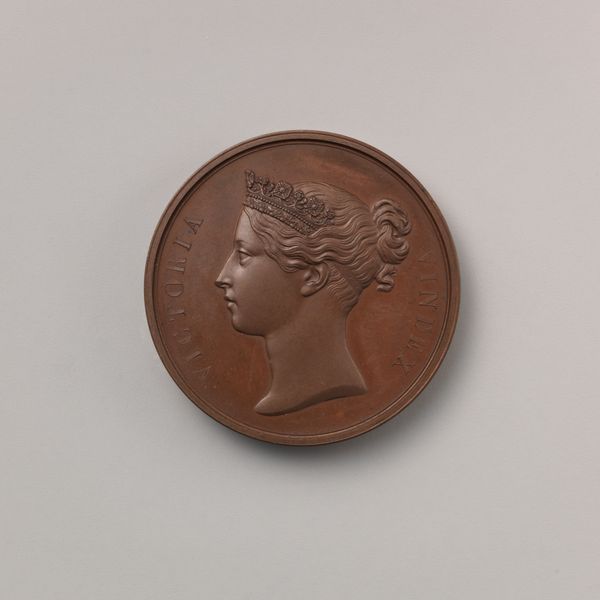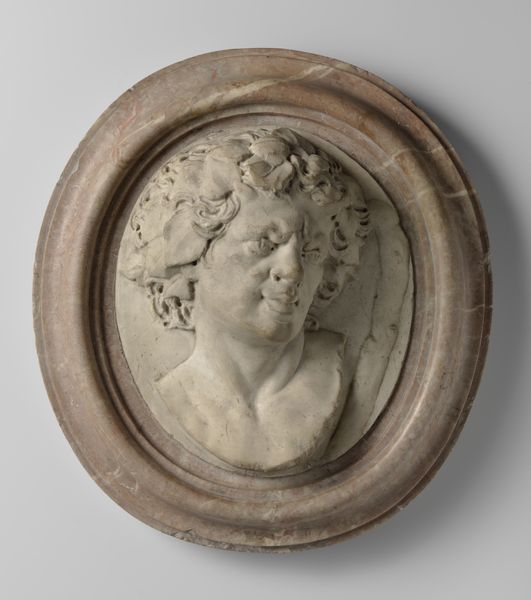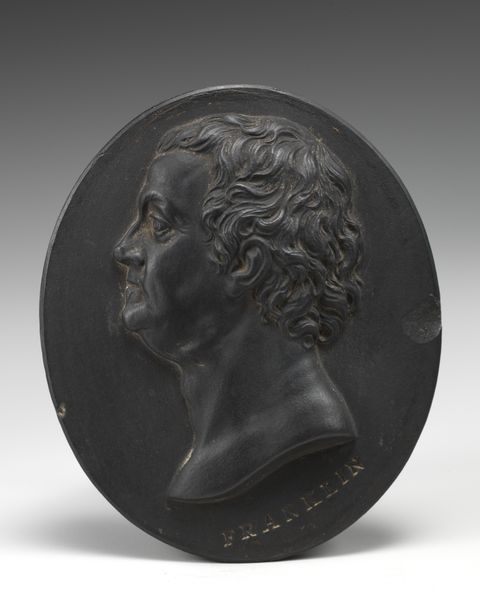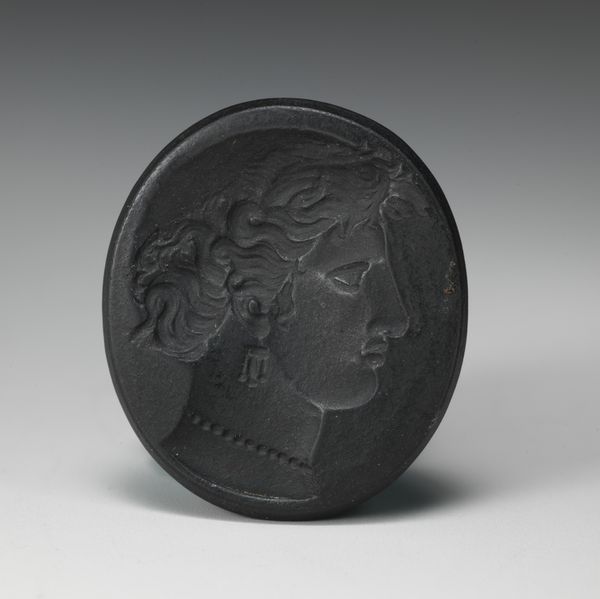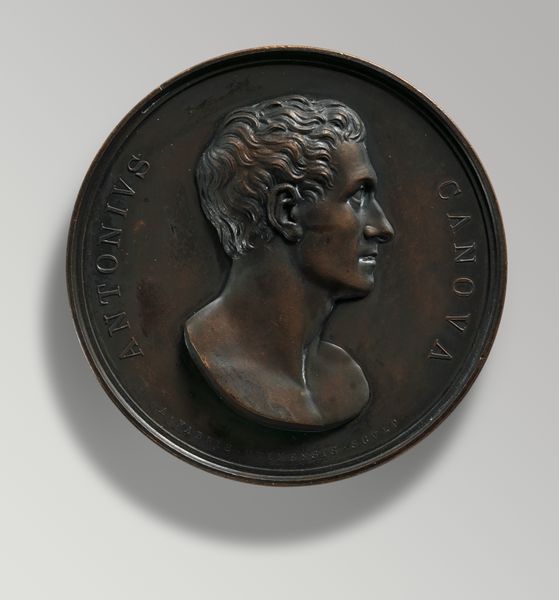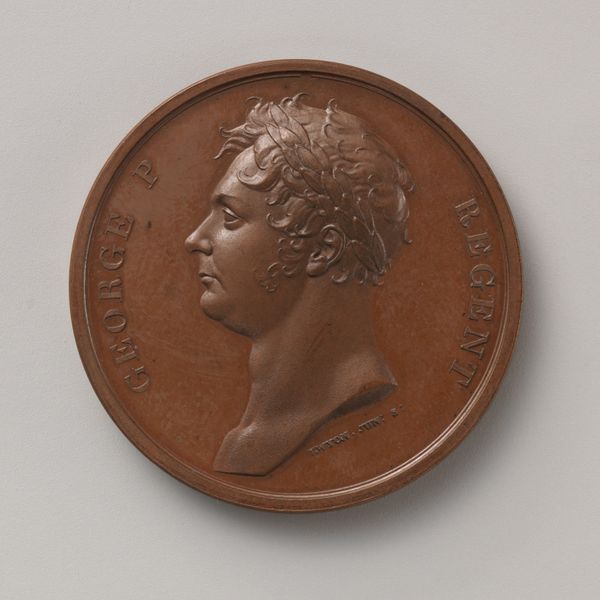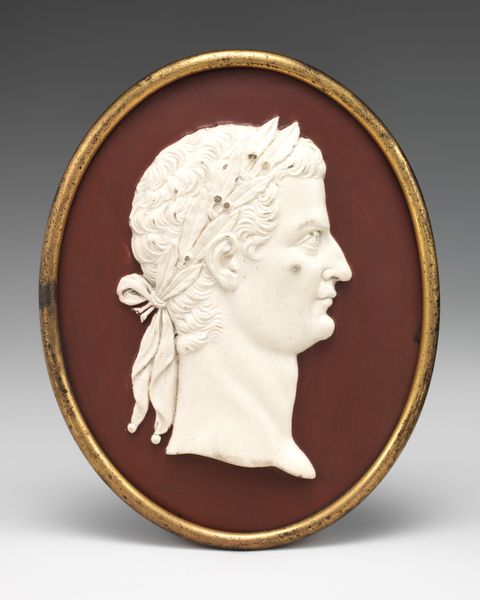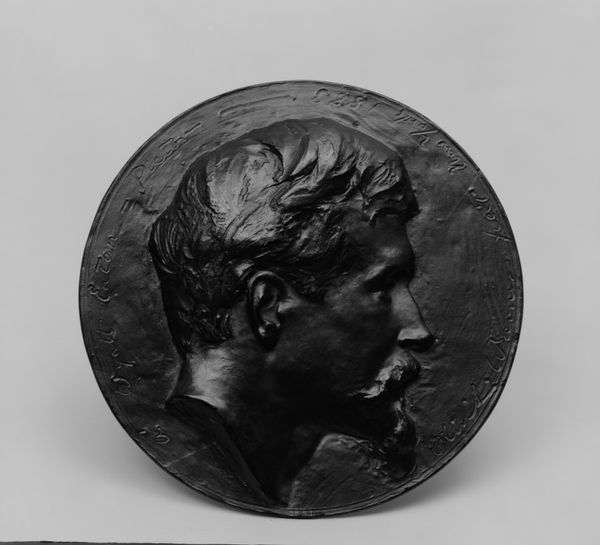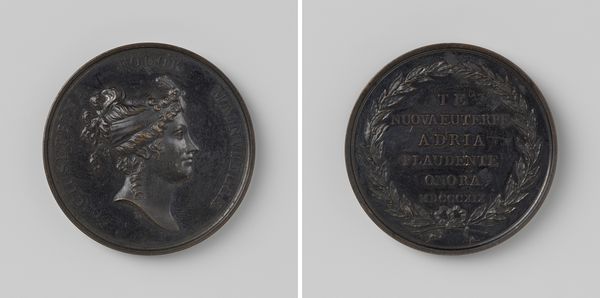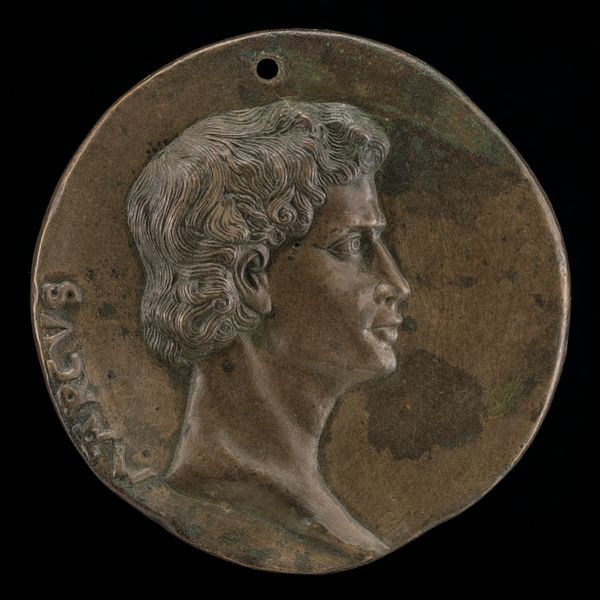
ceramic, sculpture
#
portrait
#
neoclacissism
#
ceramic
#
stoneware
#
sculpture
#
ceramic
#
history-painting
#
decorative-art
Dimensions: Height: 15/16 in. (2.4 cm)
Copyright: Public Domain
Josiah Wedgwood created this delicate stoneware cameo of Germanicus, a popular Roman general, in England sometime between 1760 and 1795. Wedgwood was an entrepreneur who pioneered modern methods of industrial production. He borrowed ideas from the art world to improve the status of his pottery and marketed his wares to the middle classes. Here, the dark 'basalt' stoneware imitates ancient Roman gems that were highly prized at the time. Aristocrats on the Grand Tour bought up classical sculpture and intaglios to display their cultivation and taste. Wedgwood democratized that elite culture, selling mass-produced cameos of historical figures like Germanicus to a wider audience. A portrait like this could act as a badge of patriotism and learning. By studying the circulation of Wedgwood's cameos, we can trace the social aspirations of eighteenth-century consumers. The museum itself plays a role, as these objects continue to accrue cultural value through their display and interpretation.
Comments
No comments
Be the first to comment and join the conversation on the ultimate creative platform.
